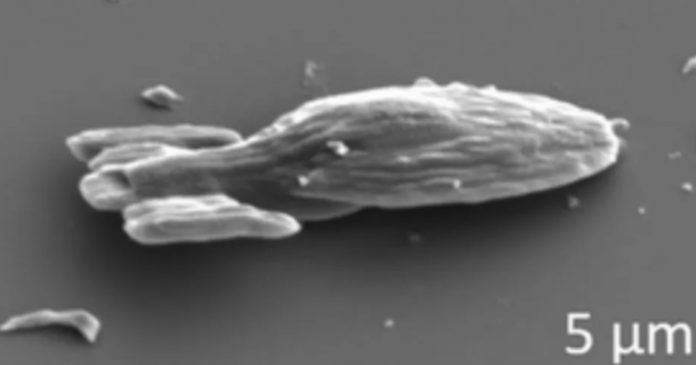3D-printing can achieve some incredible things, but few would have anticipated a microscopic Star Trek Voyager would be created to research microswimmers.
Physicists from Leiden University have been working on several microscopic items to study microswimmers. The research team previously developed a 10-micrometre ‘Benchy the tugboat’, and they have continued to develop some unusual vessels since.
The tiny USS Voyager, which is smaller than the width of a human hair, is one of the most surprising things the team has printed but, much like the miniature tugboat, it has a specific purpose.
The recreated USS Voyager is 5 micrometres in length and uses chemical reactions to give it thrust. The platinum coating of the ship reacts with a hydrogen peroxide solution to make it mobile. The tiny ship has been printed by focusing lasers inside of droplets that leads to hardening, and once this has been done the shapes can be built. However, the research is not being done simply to show the achievements of 3D-printing; the team have been experimenting with several designs to better understand microswimmers.
Microswimmers are colloidal particles that are roughly the same size as bacteria. As a result of this research, the team want to uncover how these tiny particles move and whether they can aid further medical research. A sure way to test the behaviour of microswimmers is by introducing different shapes, like the USS Voyager, into the research, PC Gamer reports.
It seems incredibly unlikely that a USS Voyager that can barely be seen by the naked eye would be able to improve drug delivery and give a greater understanding of how microswimmers operate. Nonetheless, this is exactly what the team at Leiden University are using this 3D-printing technique to do.





























